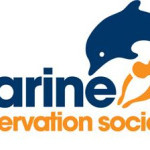- 行业: Earth science
- Number of terms: 10770
- Number of blossaries: 1
- Company Profile:
The UK charity dedicated to the protection of the marine environment and its wildlife.
An internal gravity wave propagating under the influence of both buoyancy and Coriolis forces. The dispersion relation is given by frequency \omega = +/- (N k_h + f m)/
Industry:Earth science
An internationally recognised approach to the management of risk where scientific knowledge is incomplete. Uncertainty should not be used as a reason for postponing cost-effective measures to prevent environmental degradation. Society should assume that potential risks are real and address them accordingly.
Industry:Earth science
An irregular variation of ocean current that from January to March flows off the west coast of South America carrying warm, low salinity, nutrient poor water to the south. It does not usually extend farther than a few degrees south of the equator, but occasionally it does penetrate beyond 12° S displacing the relatively cold Peru Current. The effects of this phenomenon are generally short-lived, and fishing is only slightly disrupted. Occasionally (in 1891, 1925, 1941, 1957-58, 1965, 1972-73, 1976, and 1982-83), the effects are major and prolonged. Under these conditions, sea surface temperatures rise along the coast of Peru and in the equatorial eastern Pacific Ocean and may remain high for more than a year, having disastrous effects on marine life and fishing. Excessive rainfall and flooding occur in the normally dry coastal area of western tropical South America during these events. Some oceanographers and meteorologists consider only the major, prolonged events as El Niño phenomena rather than the annually occurring weaker and short-lived ones. The name was originally applied to the latter events because of their occurrence at Christmas time.
Industry:Earth science
An ocean current flowing along the south coast of northwest Africa into the Gulf of Guinea. The Guinea current originates as an equatorial countercurrent flowing east across the Atlantic.
Industry:Earth science
An ocean current flowing eastward (counter to and between the westward-flowing north equatorial current and south equatorial current ) through all the oceans. In the Atlantic Ocean, it flows east across the ocean between the north and south equatorial currents across the full width of the ocean in northern summer, and across the eastern half of the ocean in northern winter. It eventually becomes the Guinea current . In the Pacific Ocean, it is one of the swiftest ocean currents; it flows east across the ocean between the latitudes 3=AE$=AFN and 10=AE$=AF= N. = East of the Philippines it is joined by the southern part of the north equatorial current. In the Indian Ocean, it flows between the north and south equatorial currents, to the east; unlike the equatorial countercurrents of the Atlantic and Pacific Oceans, it lies south of the equator. In northern summer, when the southwest monsoon forms a continuation of the southeast trade winds, the countercurrent, along with the north equatorial current, is replaced by an easterly flowing monsoon current .
Industry:Earth science
An ocean current flowing northeastward from Formosa to Riukiu and then close to the coast of Japan as far as latitude 35 degrees; part of the Kuroshio system . It is a density-distribution type current, and one of the swiftest of all ocean currents. Also called the Japan current. The Kuroshio is the northward flowing part of the north equatorial current (which divides east of Philippines). Beyond latitude 35=AE$=AFN, where it leaves the coast of Japan, it branches to form two sections of the Kuroshio extension . The current is similar to the Florida current of the Atlantic Ocean.
Industry:Earth science
An ocean current flowing northwestward along the northern coast of South America (the Guianas). The Guiana current is an extension of the south equatorial current (flowing west across the ocean between the equator and 20 degrees), which crosses the equator and approaches the coast of South America. Eventually, it is joined by part of the north equatorial current and becomes, successively, the Caribbean current and the Florida current .
Industry:Earth science
An ocean current flowing south along the east coast of Greenland, carrying water of low salinity and low temperature. The east Greenland current is joined by most of the water of the Irminger current . The greater part of the current continues through Denmark Strait between Iceland and Greenland, but one branch turns to the east and forms a portion of the counterclockwise circulation in the southern part of the Norwegian Sea. Some of the east Greenland current curves to the right around the tip of Greenland, flowing northward into Davis Strait as the west Greenland current . The main discharge of the Arctic Ocean is via the east Greenland current.
Industry:Earth science
An ocean current flowing southwestward along the coast of Somaliland (East Africa) as a continuation of the north equatorial current . In summer (Northern Hemisphere), when the north equatorial current and the equatorial countercurrent are replaced by an eastward flowing monsoon current , the Somali current reverses its direction and flows north from about 10=AE$=AFS.
Industry:Earth science
An ocean current flowing westward through the Caribbean Sea. It is formed by the commingling of part of the waters of the north equatorial current with those of the Guiana current . It flows through the Caribbean Sea as a strong current and continues with increased speed through the Yucatan Channel; there it bends sharply to the right and flows eastward with great speed out through the Straits of Florida to form the Florida current .
Industry:Earth science
